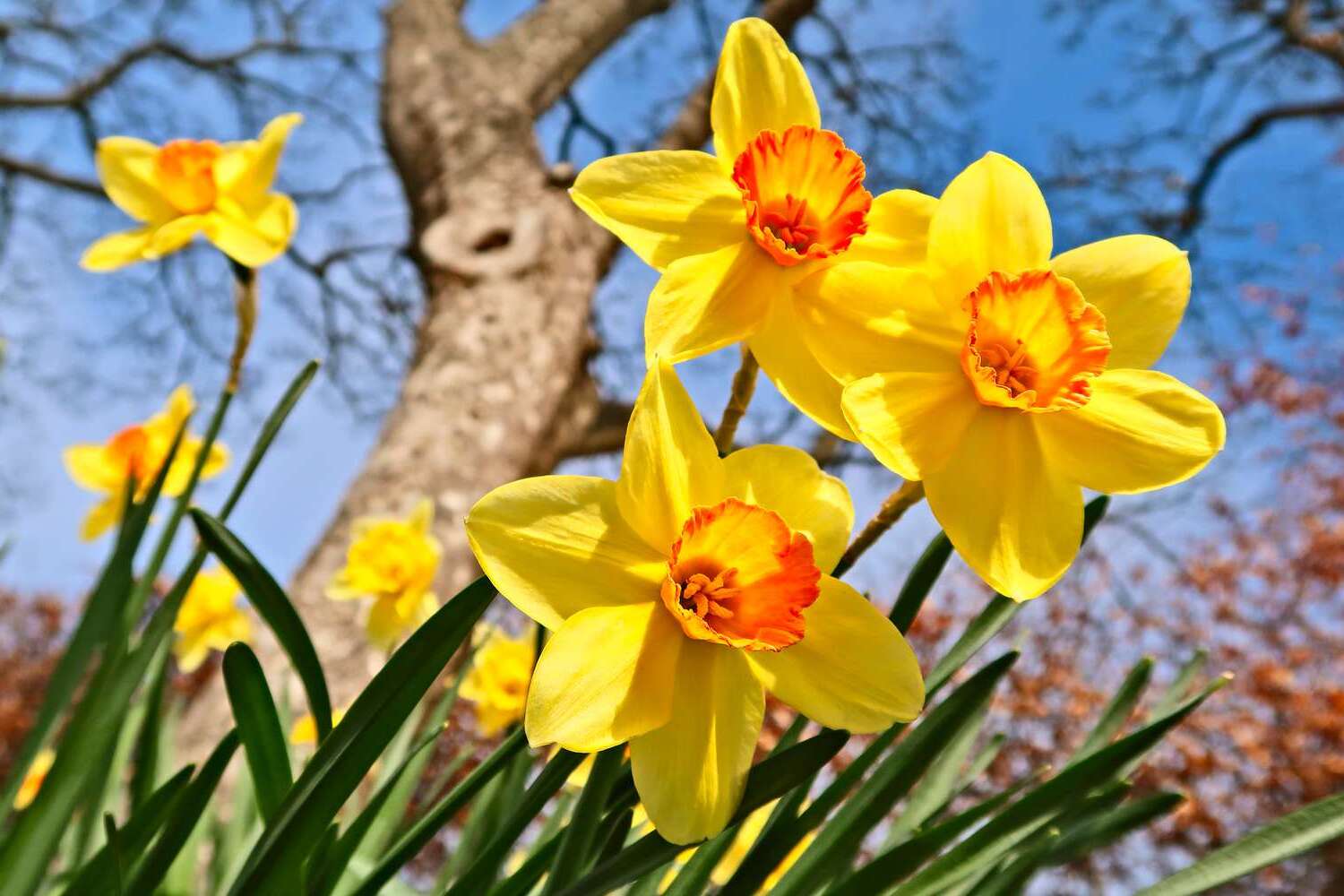
Flowering bulbs are nature's little miracles, packed with everything they need to burst into bloom. These underground powerhouses are not just pretty faces; they play a crucial role in gardens and ecosystems. Did you know that some bulbs can survive extreme conditions, from freezing winters to scorching summers? They store nutrients, allowing them to thrive even when the environment isn't ideal. From tulips to daffodils, these plants have fascinating histories and unique characteristics. Whether you're a gardening newbie or a seasoned pro, understanding these 26 facts about flowering bulbs will give you a deeper appreciation for these resilient beauties.
Key Takeaways:
- Flowering bulbs are underground storage organs that produce beautiful flowers and bloom year after year. They include tulips, daffodils, crocuses, hyacinths, and lilies, each with unique characteristics and blooming times.
- Understanding the growth cycle of flowering bulbs, from dormancy to blooming and division, can help cultivate a beautiful garden. They offer benefits such as low maintenance, perennial growth, pollinator attraction, seasonal color, and versatility.
What are Flowering Bulbs?
Flowering bulbs are underground storage organs that produce some of the most beautiful and diverse flowers. They store nutrients to help plants survive adverse conditions and bloom year after year.
- Tulips are one of the most popular flowering bulbs, originating from Central Asia.
- Daffodils are known for their bright yellow flowers and are often associated with spring.
- Crocuses are among the first flowers to bloom in late winter or early spring.
- Hyacinths have a strong, sweet fragrance and come in a variety of colors.
- Lilies are summer-blooming bulbs that can grow quite tall and have large, showy flowers.
How Do Flowering Bulbs Grow?
Understanding how flowering bulbs grow can help you cultivate a beautiful garden. These plants have a unique growth cycle that sets them apart from other types of plants.
- Dormancy is a period when the bulb is inactive, usually during winter.
- Sprouting occurs in early spring when the bulb starts to grow roots and shoots.
- Blooming happens in late spring or early summer, depending on the type of bulb.
- Foliage continues to grow after the flowers have faded, helping the bulb store energy for the next year.
- Division is a natural process where bulbs produce offsets, or smaller bulbs, that can be separated and replanted.
Benefits of Planting Flowering Bulbs
Planting flowering bulbs offers numerous benefits, from aesthetic appeal to environmental advantages. They are a great addition to any garden.
- Low Maintenance makes bulbs ideal for beginner gardeners.
- Perennial Growth means they come back year after year with minimal effort.
- Pollinator Attraction helps support bees, butterflies, and other beneficial insects.
- Seasonal Color provides vibrant blooms at different times of the year.
- Versatility allows them to be planted in gardens, containers, or even indoors.
Interesting Facts About Flowering Bulbs
Flowering bulbs have a rich history and some fascinating characteristics. Here are some intriguing facts that might surprise you.
- Tulip Mania was a period in the 17th century when tulip bulbs were so valuable they were used as currency.
- Saffron comes from the stigmas of Crocus sativus, a type of flowering bulb.
- Amaryllis bulbs can bloom indoors during the winter, adding color to your home.
- Snowdrops are often the first flowers to bloom in late winter, even through snow.
- Bluebells create stunning blue carpets in woodlands during spring.
Tips for Planting and Caring for Flowering Bulbs
Proper planting and care can ensure that your flowering bulbs thrive and produce beautiful blooms. Here are some tips to help you get started.
- Planting Depth is crucial; bulbs should be planted at a depth three times their height.
- Well-Drained Soil prevents bulbs from rotting.
- Sunlight is essential; most bulbs need full sun to partial shade.
- Watering should be done sparingly; overwatering can cause bulb rot.
- Fertilizing in early spring can help boost growth and blooms.
- Mulching helps retain moisture and protect bulbs from extreme temperatures.
Final Thoughts on Flowering Bulbs
Flowering bulbs bring vibrant colors and life to any garden. From tulips to daffodils, these plants are easy to grow and maintain. They thrive in various climates and can be planted in both spring and fall. Bulbs store nutrients, allowing them to bloom year after year with minimal care. They also attract pollinators like bees and butterflies, enhancing the ecosystem. Whether you're a seasoned gardener or a beginner, incorporating flowering bulbs into your garden is a rewarding experience. Their beauty and resilience make them a favorite among garden enthusiasts. So, next time you're planning your garden, consider adding a few bulbs. You'll enjoy a burst of color and a touch of nature's magic right in your backyard. Happy gardening!
Frequently Asked Questions
Was this page helpful?
Our commitment to delivering trustworthy and engaging content is at the heart of what we do. Each fact on our site is contributed by real users like you, bringing a wealth of diverse insights and information. To ensure the highest standards of accuracy and reliability, our dedicated editors meticulously review each submission. This process guarantees that the facts we share are not only fascinating but also credible. Trust in our commitment to quality and authenticity as you explore and learn with us.
